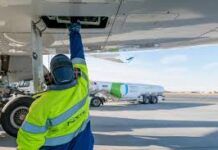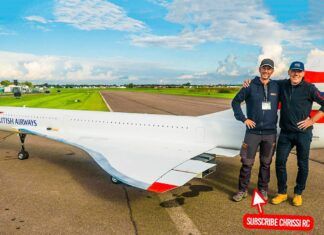 A solar-powered, unmanned aircraft launched from the Yuma Proving Ground in Arizona has flown for 82 hours 37 minutes, more than twice as long as the current official world record of 30 hours 24 minutes set by Global Hawk in 2001, the manufacturer said on Sunday. However, the flight by Zephyr, built by QinetiQ for U.K. and U.S. defense agencies, will likely remain unofficial because required record-breaking protocols were not followed. “We were concentrating more on the flight than the record,” QinetiQ spokesman Douglas Millard told The Associated Press. The small, 66-pound carbon-fiber aircraft is launched by hand. By day it flies on solar power generated by paper-thin silicon solar arrays that cover its wings. By night it is powered by lithium-sulphur batteries, which are recharged by solar power during daylight. The Yuma flight trial took place between July 28 and 31 and reached altitudes up to 60,000 feet. The trial included a military assessment of a U.S. Government communications payload.
A solar-powered, unmanned aircraft launched from the Yuma Proving Ground in Arizona has flown for 82 hours 37 minutes, more than twice as long as the current official world record of 30 hours 24 minutes set by Global Hawk in 2001, the manufacturer said on Sunday. However, the flight by Zephyr, built by QinetiQ for U.K. and U.S. defense agencies, will likely remain unofficial because required record-breaking protocols were not followed. “We were concentrating more on the flight than the record,” QinetiQ spokesman Douglas Millard told The Associated Press. The small, 66-pound carbon-fiber aircraft is launched by hand. By day it flies on solar power generated by paper-thin silicon solar arrays that cover its wings. By night it is powered by lithium-sulphur batteries, which are recharged by solar power during daylight. The Yuma flight trial took place between July 28 and 31 and reached altitudes up to 60,000 feet. The trial included a military assessment of a U.S. Government communications payload.
“In addition to setting a new unofficial record, the trial is a step towards the delivery of Zephyr’s capability for joint, real-time, battlefield persistent surveillance and communications to forces in the field at the earliest opportunity,” said Simon Bennett, a QinetiQ spokesman. Potential applications for Zephyr include earth observation and communications relay in support of a range of defense, security and civil requirements, the company said.

































